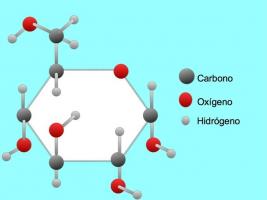Difference between solute and solvent
A solute is a substance that dissolves in a solvent with which it forms a solution. The solute is normally a solid, but it can also be a liquid or a gas. Is found in lower proportion than the solvent in a solution.
A solvent is the substance that dissolves a solute, forming a solution. This is normally a liquid, but it can also be a solid or a gas. Is found in higher proportion than the solute in a solution.
An example of a solution can be seen in a cup of coffee, in which the solute is ground coffee (solid) and the solvent is hot water (liquid).
Solute |
Solvent |
|
|---|---|---|
Definition |
It is a substance that dissolves in a solvent and with which it forms a solution. |
It is a substance that dissolves a solute and with which it forms a solution. |
Characteristics |
|
|
Solubility |
|
|
Colligative properties in a solution |
|
|
| Examples |
|
|
What is a solute?
A solute is a substance that dissolves in a solvent with which it forms a solution. The proportion in which the solute is in the solution is less than the proportion of the solvent in which it dissolves.
The solute particles interact with those of the solvent, and the strength of this interaction between the solute and the solvent is greater than that holding the internal solute particles together. Basically, the solute molecules are stabilized by interacting with the solvent molecules.

Characteristics of a solute
- It is the substance that is found in the least amount in the solution.
- The most common state in which it occurs is solid, although there are also solutes in gaseous and liquid states.
- When in a gaseous state, its solubility is affected by pressure, volume, and temperature.
- Polar solutes dissolve in polar solvents and nonpolar solutes dissolve in nonpolar solvents.
What is a solvent?
A solvent is the substance in which a solute dissolves, forming a solution. The amount of solvent found in a solution is greater than the amount of solute found in it.
Water is the most common solvent. It is known as a "universal solvent" because it has a high dielectric constant. Substances in liquid, gaseous or solid states can dissolve in water.

Characteristics of a solvent
- It is found in greater proportion in a solution.
- Determine what the state of the solution will be.
- It is generally a liquid, although it can be gaseous or solid.
- Polar solvents dissolve polar solutes and nonpolar solvents dissolve nonpolar solutes.
Solvent polarity
Polar solvents have a high dielectric constant and have at least one electronegatively charged atom.
There are two types of polar solvents. On the one hand, there are the polar protic solvents. These solvents form hydrogen bonds, through hydrogen bonds O-H or N-H with those substances that dissolve.
On the other hand, there is polar aprotic solvents, which are not capable of forming these hydrogen bonds. For example acetone is a polar aprotic solvent.
The nonpolar solvents They are those that do not have negative or positive polarity, their atomic bonds have similar electronegative charges and do not produce an electrical charge. These are mostly organic substances. For example, chloroform and hexane are nonpolar organic solvents.
What is a solution?
A solution is ahomogeneous mixture composed of at least two substances: a solute and a solvent.
Inside the solution, the solute is in a smaller proportion than the solvent.
Characteristics of a solution
- A solution is a homogeneous mixture, which means that the substances that compose it are conjugated in such a way that it is not possible to differentiate them.
- It is not possible to separate the substances that compose it again. Once mixed, both the solute and the solvent cannot be separated, at least by mechanical means (using a tool, filter, etc.).
- It will remain stable without the need for any action to be taken on it, as long as the same conditions (temperature, pressure) are maintained.
Know the Difference between homogeneous mixture and heterogeneous mixture.
Solvation of a solution
The molecules of the solute and the solvent interact when they come into contact. The solvation is the process in which solute ions yield to solvent molecules. When the solvation process occurs, the solvent molecules surround the solute molecules and they stop interacting with each other with the same force to do so with those of the solvent.
In this case, the principle that the similar dissolves the similar. This means that polar solute molecules only interact with polar solvents, and non-polar solutes only interact with non-polar solvents.
Solubility of a solution
If one substance is capable of dissolving in another, this substance is said to be soluble. The solubility of a solute is the maximum point at which it can no longer dissolve in a solvent.
This is the property of a substance that allows it to dissolve in another substance. When this happens, both substances reach an equilibrium, without the resulting solution presenting alterations, as long as the existing conditions are maintained.
Saturation of a solution
The solute reaches its solubility limit when it is no longer able to dissolve in the solvent. This is known as saturation. When more solute is added to a saturated solution, it will remain in its current state and will not dissolve, causing a supersaturation of the solution. On the other hand, a unsaturated solution It is one in which the amount of solute to dissolve in the solvent is less than the maximum possible amount that could be dissolved.
Factors that affect the solubility of a substance
The temperature affects a substance according to the state in which it is. However, as a general rule, the higher the temperature, the more soluble a solvent will be.
- When it comes to a solid solute, its solubility increases with increasing temperature in liquid solvents.
- When it comes to a gaseous solute, its solubility decreases with increasing temperature in other gases and in liquids.
- When dealing with a liquid solute with a liquid solvent, the effects of temperature depend on the particular case.
Another factor that affects solubility is the polarity. The molecules that make up a substance are polar when they have an electropositive and electronegative charge at their ends (poles). If the molecule has no electrical charge, this molecule is nonpolar. Polar solutes dissolve in polar solvents, and nonpolar solutes dissolve in nonpolar solvents (so "similar dissolve similar").
The Pressure it also affects solubility, but it does so particularly in the case of gases. Both solids and liquids do not undergo great changes in their soluble properties under greater or lesser pressure. Gases, on the other hand, when they undergo higher pressure are more soluble. According to Henry's Law, postulated by William Henry (1774-1836), it states that "the solubility of a gas in a liquid is directly proportional to the pressure of the gas on the surface of the solution".
The size (or volume) of the solute molecules is a factor that affects the rate at which it dissolves. In a solid, the size of the exposed area of the solute determines how easily the solvent molecules will surround it.
Colligative properties of a solution
The colligative properties of a solution are those that depend only on the proportion between the quantity of solute particles and solvent particles, regardless of the composition of said substances. These properties are:
- The boiling point of a solution is higher than that of its solvent (boiling point).
- The melting point of a solution is lower than that of its solvent (cryoscopic descent).
- The more particles a solute has, the higher the boiling point of the solution and the lower the melting point.
- The vapor pressure of a solution is less than that of its solvent.
- The phenomenon of osmosis: it occurs when the molecules of a liquid solvent (water) pass through a semi-permeable membrane between two solutions with different concentrations of a solute. The solution that has the largest amount of the solute receives the solvent from the other solution, until an equilibrium between the two is reached.
Classification of a solution according to the amount of solute
When the amount of solute in a solution is low, it dissolves in the solvent easily, and the solution is considered dilute. On the other hand, when there is a large amount of solute and it dissolves with difficulty, the solution is concentrated. In the event that the solute is no longer able to dissolve in the solvent, the solution is said to be saturated.
Examples of solutions
- Glues
- Paintings.
- Medicines.
- Herbal infusions (tea).
- Coffee (prepared as a drink).
- Soaps
- Alloys between metals.
- The air.
Types of solutions
Condition |
Examples |
|---|---|
Gaseous solvent + gaseous solute |
Oxygen + acetylene = oxyacetylene mixture (used in metal welding) |
Gaseous solvent + liquid solute |
Air + water = humid air or water vapor. |
Gaseous solvent + solid solute |
Air + dust and smoke = smog |
Liquid solvent + gaseous solute |
Water + carbon dioxide = carbonated water |
Liquid solvent + liquid solute |
Water + acetic acid = vinegar |
Liquid solvent + solid solute |
Water + salt = salt water |
Solid solvent + gaseous solute |
Platinum + hydrogen = hydrogen electrode |
Solid solvent + liquid solute |
Gold + mercury = gold amalgam |
| Solid solvent + solid solute | Copper + tin = bronze |


